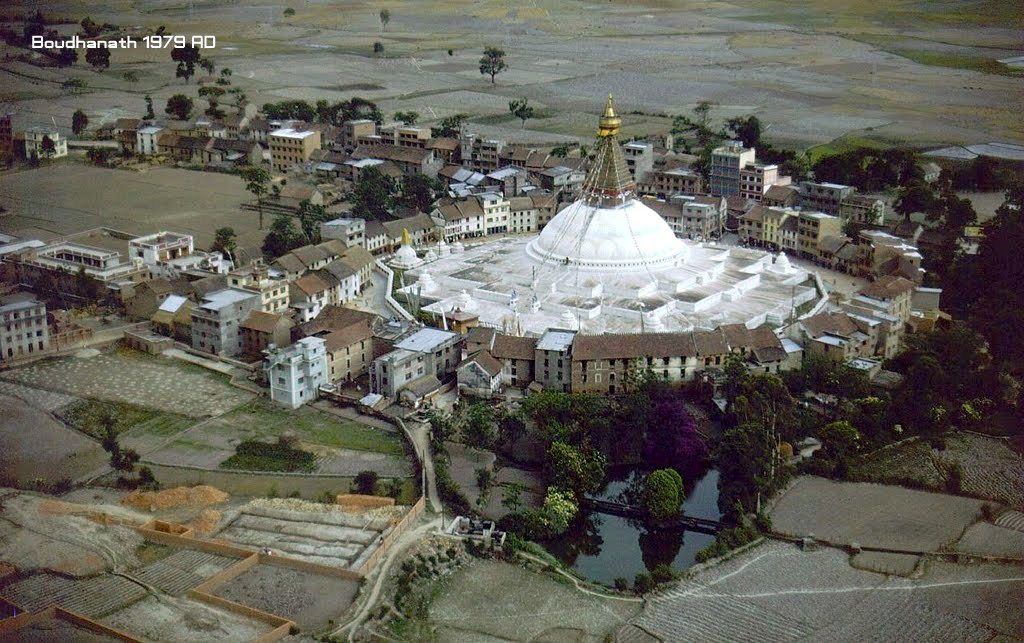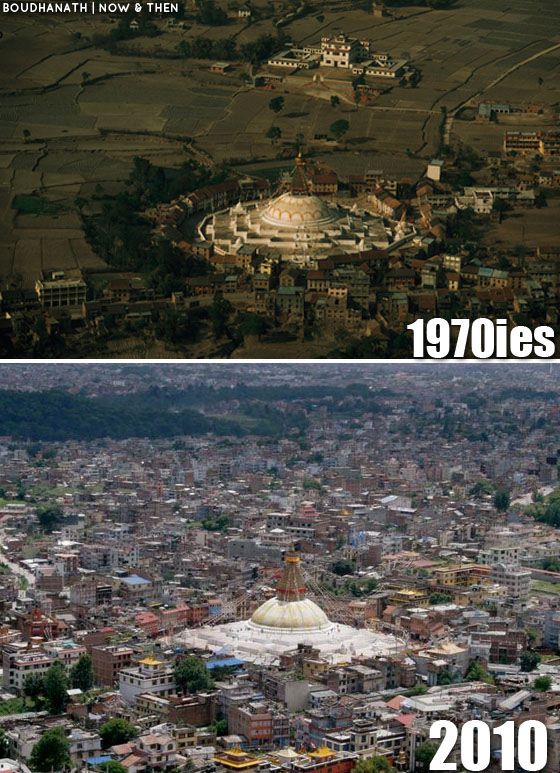A deep question to which I offer a prosaic answer: I’m circumambulating Boudha stupa. I wrote about circumambulation at here. Where is Boudha and what’s a stupa?
Stupa is Sanskrit for “a knot or tuft of hair”. In ancient Hindu texts it signifies “tree trunk” because mounds of dirt around a tree were tombs for kings and heroes. Later, it came to mean a pyramidal or dome-like monument containing relics of the historical Buddha Shakyamuni (563-478 BC) or other revered figures. Buddha Shakyamuni is often depicted as having a topknot that symbolizes his attainment of enlightenment.
Boudha stupa is one of the world’s largest. It is on the ancient trade route from Tibet and was probably built in the 14th century when Buddhists fled from Mughal invasions of northern India. It is said to entomb the remains of Kāśyapa Buddha, the third of the five Buddhas of the present ‘Fortunate Aeon’ and the last of six Buddhas prior to the historical Buddha. Kāśyapa was born in India to Brahmin parents (i.e., Hindu priestly caste) and is said to have been over 30 feet tall, perhaps accounting for Boudha stupa’s great size. It is now a pilgrimage destination for both Buddhists and Hindus.
Here’s how it looked when it was made a UNESCO World Heritage Site:

Just over a century earlier, Rana Prime Minister Jung Bahadur invited Taipo Shing, a Buddhist who had come on pilgrimage from Szechuan in China and settled in Boudha, to interpret in peace negotiations after war with China. He was made head man of Boudha and granted the income from extensive farmland as a reward for his services, married the daughter of one of Jung Bahadur’s concubines and was entitled the First Chini Lama. His successors grew wealthy and powerful (they were consuls of the Dalai Lamas to the Kingdom of Nepal) until the Ranas fell. Land reform in 1961 following restitution of the monarchy stripped the stupa of much of its supporting lands.
The influx of refugees from Tibet starting in the 1950s brought new wealth to the area. The stupa is now surrounded by more than fifty Tibetan monasteries, which are themselves surrounded by housing for the enormously increased Kathmandu population.

The Great Proletarian Cultural Revolution started by Mao Tsetung in 1965 to destroy: “old thinking, old culture, old habits and old customs” led to the destruction of over 6,000 monasteries in Tibet and more than one in six Tibetans starved to death or was killed. Some Tibetans say their protector deity was reborn as Chairman Mao to force them from a familiar world where they could no longer progress spiritually. Those who died and what was destroyed were, they believe, necessary casualties of spiritual progress; they were dispersed to grow again and make their wisdom available to all.
Regret for the loss of Boudha’s peaceful surroundings is in any case a mistake. Better to truly accept that everything is changing in every moment. The thought may arise in our mind that increased availability and popularity of Tibetan Buddhism’s beneficial teachings is good but ideally we will just notice our thoughts and feel no need to make judgments about them. As a wise man said: “If you have one foot in the past and one in the future, you’ll only hurt your crotch”.
